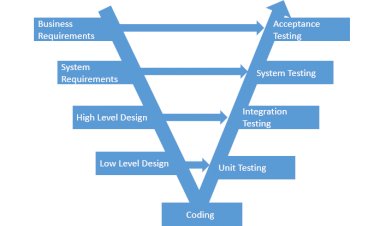Types of topology
This is a term used to describe the physical layout or mapping of a network. Network topology further states how nodes in a network are arranged.

NETWORK TOPOLOGY
This is a term used to describe the physical layout or mapping of a network. Network topology further states how nodes in a network are arranged.
READ ALSO: Database Management System
Network topology is further classified into six the following:
a) Bus topology
Computer systems using this type of topology are connected to a single cable which links one end of a network to another end. This topology transmits data in only one direction. Bus topology is also known as linear bus stop topology. An example of such topology is two computers connected to each other to transfer data using a LAN cable.
READ ALSO: Biometrics authentication
Advantages of bus topology.
1. Cheap hence widely used for small networks.
2. This type of technology is easy to install.
3. It takes less time for this topology to be installed.
4. It is easy for the topology to expand.
Disadvantages of bus topology.
1. Bi-directional communication is unavailable.
2. The whole network will fail when the backbone cables fail.
3. Data transmitted through heavy traffic is not suitable for this topology
b) Ring topology.
This type of topology is where computer systems form a ring shape where each device is connected directly to the other device through point to point connection. This topology also involves connection of the first node to the last one.
READ ALSO: Advantages and disadvantages of V-Model
Advantages of ring topology.
1. Cheap compared to Star topology
2. Has a higher ability to handling of load.
3. Identification of faults in network nodes is easier due to its easy configuration.
4. Transmission of data is at high speed due to unidirectional traffic.
Disadvantages of ring topology.
1.Single node failure could lead to entire network failure.
2. Changes made to a single node affect the entire networks performance.
3. Data transmission process is slower compared to other topologies.
c) Star topology.
Computer systems are connected to a central node which is known as a hub. The computers obtain data from the single central hub.
Advantages of star topology
1. Fast performance when the nodes are less.
2. Simple to operate due to the central positioning of the hub.
3. It’s easy to detect a fault when it occurs since the node is centrally positioned.
4. The failure of a computer does not affect performance of other computers.
5. The removal of a computer from the network is easy.
Disadvantages of star topology
1. The topology is costly to install
2. Once the hub has a defect, the entire network fails.
3. The performance of the network depends on the hub itself
READ ALSO: How to Create Android Horizontal Scrolling RecyclerView
d)MESH TOPOLOGY
In this topology, each computer system is connected to the other. Point to point connection is formed among the computer systems. It is further classified into either partial mesh topology or full mesh topology.
In partial mesh topology, the computers are connected to two or three computers while in full mesh topology, all the devices are connected to each other.
Advantages of mesh topology
1. There are no traffic issues.
2. Easy to find network routes when one is blocked since there are many routes.
3. The topology provides security and privacy.
4. Network expansion can be done without disruption of other computer systems.
Disadvantages of mesh topology
1. The installation process is complex
2. The topology is expensive due to cost of cables.
3. Large space is needed to conduct cable structuring.
4. More space is required due to links.
READ ALSO: Android String-Array Resource for all Counties in Kenya
e)Tree topology
This topology consist of a root node two nodes which are connected each to the root node. It is an example of a parent child hierarchy. This topology is also referred to as hybrid topology.
Advantages of tree topology.
1. It has features of star and bus topology .
2. The process of finding faults is easy.
3. Easy addition of computer systems to a node.
Disadvantages of tree topology.
1. The topology is costly.
2. Large cables are required.
3. Failure of the root node causes failure of the entire network.
READ ALSO: SOFTWARE DEVELOPMENT LIFE CYCLE MODELS
Fundamental #team #topologies by @manupaisable at #devopsdaysportugal pic.twitter.com/zzisVjQu2E
— Nuno Rafael Gomes ???? (@nrgomes) June 3, 2019
@HWusers #HUG18 #controledge #PLC new #ethernetIP #server or #client built in,new #IO #LEAP enhancements #simulation and #Experion #integration enhancements #connect to other #ethernetIP #PLCs #ring #star #linear or mixed #network #topologies @arc_advisory pic.twitter.com/oUf77unadd
— Craig Resnick (@CraigDResnick) June 18, 2018
#PWM Controller Handles Multiple #Topologies with Negative Input #Voltages http://t.co/cQK9stL4rr @LinearTech pic.twitter.com/kWAyJ85zqP
— Digi-Key Electronics (@digikey) July 10, 2015
#Topology of products #similarity #network for #market #forecastinghttps://t.co/eVqGSUdjBt
— tag (@tagoma_tech) December 15, 2019
Love it when science turns into art! Awesome image in the talk by George Tiley earlier today #topologies #phylogenetics #SSB2017 pic.twitter.com/DXiIUsvz49
— Kassandra Ford (@kassthefish) January 10, 2017
SUBSCRIBE TO OUR YOUTUBE CHANNEL BELOW TO WATCH MORE VIDEOS


























